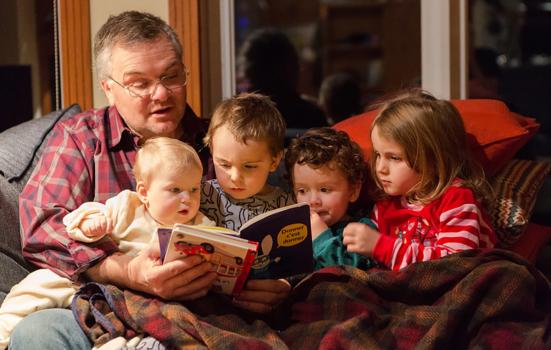“You may be down, but you're not out”, says Ron Evans, who is convinced this pandemic is poised to be the biggest catalyst to creativity that any of us has experienced in our lives.

Papaye_verte on VisualHunt / CC BY 2.0
You’re tired. I get it. I am too. What day is it? When you're sheltering, the days tend to run together, don't they?
The last few weeks have been exhausting for everyone. Life is not normal. There isn’t even a “new normal” yet. I work as an advisor to non-profit organisations. Many are feeling stuck, mired in all the uncertainty, so if you are too, you’re not alone.
And yet, after getting punched on the nose over the last few weeks, non-profit leaders are fighting back. Adapting. Learning. The creativity is starting to flow, trying to find the path through this unknown ruleset. When asked if they want to experiment with something completely different, cultural teams are saying, “Yes!” You may be down, but you're not out.
We must amplify this feeling because this pandemic is poised to be the biggest catalyst to creativity that any of us has experienced in our lives. Are you embracing this opportunity to innovate?
Observe, adapt – and enjoy
I’m originally from California, where wildfires have ravaged the state several times in recent years. It’s easy to forget that wildfires are a natural occurrence that benefits the land. Old growth is cleared. New nutrients are deposited into the soil. And from that newly fertile environment comes new opportunity for growth, as seeds thrive and form an even stronger forest.
Much of what we’ve known as ‘business as usual’ has gone up in flames. But it hasn’t scorched everything. Change always comes with new opportunities. Your job? To observe. And then, adapt.
Yes, it is the time to take care of yourself first. Many leaders have shared with me that they’re having personally rewarding experiences that they haven’t had in a long time. New time to read extra books to children before tucking them into bed. Dinners at home with everyone together as a family. Abandoned hobbies rediscovered.
Just yesterday, two executive director clients sent me happy pictures of their baking projects. I’m not sure there’s a better sign of a trusting relationship than texting photos of homemade blueberry pancakes. In the midst of all this, people are able to say: “Wow, this is good. I could get used to this.”
But as I often say: “Don’t wait to innovate.” The rules haven’t been written yet, so it’s up to you. The sooner you start to adapt creatively, the more sustainable you’ll be. When you start asking questions such as “How might we carry out our mission, given that people can’t attend in person?” you’re on your way to success.
The genie is out of the bottle
Where to start? Observe the world around you.
If you’ve spent recent years bemoaning trends in audience attendance to physical venues, look at the societal shift that is happening around online experiences. My 3-year-old son attended his first livestreamed preschool class last week. People who “don’t do social media” are now happy to connect with family members over Zoom calls. Music Theatre International is licensing the livestreaming and recording of their theatre productions. Soon, subscribers will be able to buy hybrid season subscriptions to in-venue productions, as well as to virtual seats to theatrical experiences designed from the ground up to be seen online.
The genie is out of the bottle. Are you looking backwards to what was, or forwards to what you will make happen?
Meeting needs and mission
Successful products and services are designed around consumer needs and interests, which are constantly changing. As an example, people are currently interested in:
- Kids at home while parents work
- Isolated seniors with reduced contact opportunities
- People who have lost their jobs
- People new to freelancing
- Whole teams working at home…remote working is having its moment
- Livestreaming is also having its moment
- Online experiences with others
- Gaming
- Telehealth (talking with your doctor over video)
- Shortages of staple goods
- High anxiety
- Lack of exercise
- Family stress at home during shelter-in-place
- Fighting boredom
- Peacefulness after boredom
- Rediscovery of lost hobbies
- Meaningful new experiences with those who live with you
- Cooking at home
- Sewing/mask-making
The question that you should be falling asleep at night thinking is: “How can I answer my customer’s current needs and meet my mission at the same time?” And keep asking this question, forever. Those needs are constantly changing.
The leaders and organisations who will thrive in this new environment will be those who can most quickly adapt their offerings to serve new customer desires. And to be successful, you’ll need to fail. Probably many times.
Let’s get the failures out of the way now. This is not the time for your ‘best’ work. Skip the “are we on brand” conversation. Let’s roll up our sleeves, get scrappy, and break stuff. Your audiences support you and can’t wait to see what you have in store for them.
Ron Evans works as a trusted advisor to nonprofit leaders around the world. He dramatically improves individual and organisational performance, and teaches others his process. He can be reached at askronevans.com and on Twitter: @askronevans




